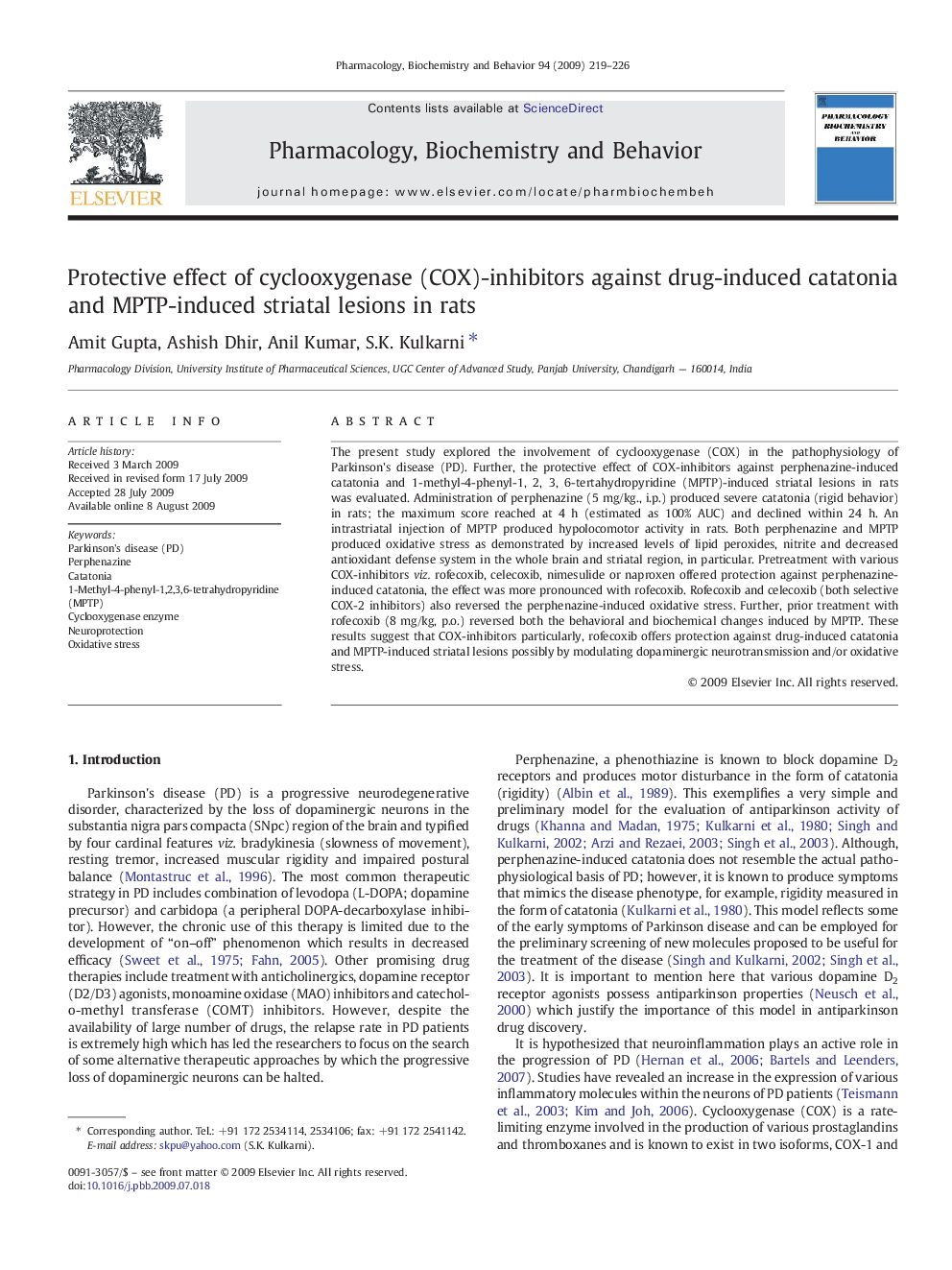| Article ID | Journal | Published Year | Pages | File Type |
|---|---|---|---|---|
| 2013524 | Pharmacology Biochemistry and Behavior | 2009 | 8 Pages |
The present study explored the involvement of cyclooxygenase (COX) in the pathophysiology of Parkinson's disease (PD). Further, the protective effect of COX-inhibitors against perphenazine-induced catatonia and 1-methyl-4-phenyl-1, 2, 3, 6-tertahydropyridine (MPTP)-induced striatal lesions in rats was evaluated. Administration of perphenazine (5 mg/kg., i.p.) produced severe catatonia (rigid behavior) in rats; the maximum score reached at 4 h (estimated as 100% AUC) and declined within 24 h. An intrastriatal injection of MPTP produced hypolocomotor activity in rats. Both perphenazine and MPTP produced oxidative stress as demonstrated by increased levels of lipid peroxides, nitrite and decreased antioxidant defense system in the whole brain and striatal region, in particular. Pretreatment with various COX-inhibitors viz. rofecoxib, celecoxib, nimesulide or naproxen offered protection against perphenazine-induced catatonia, the effect was more pronounced with rofecoxib. Rofecoxib and celecoxib (both selective COX-2 inhibitors) also reversed the perphenazine-induced oxidative stress. Further, prior treatment with rofecoxib (8 mg/kg, p.o.) reversed both the behavioral and biochemical changes induced by MPTP. These results suggest that COX-inhibitors particularly, rofecoxib offers protection against drug-induced catatonia and MPTP-induced striatal lesions possibly by modulating dopaminergic neurotransmission and/or oxidative stress.
